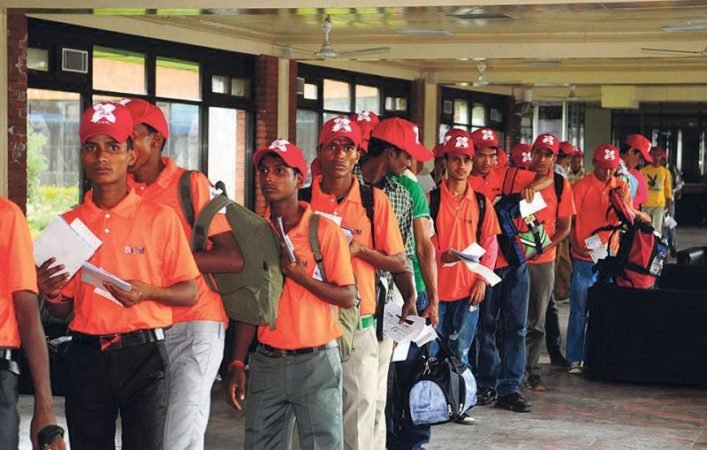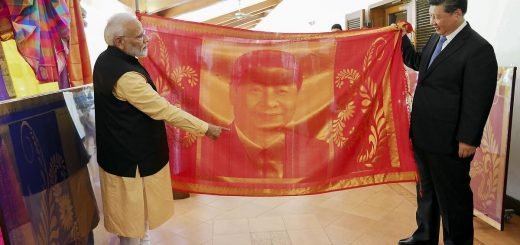COVID-19: Nepal’s Evacuation of its Stranded Citizens

“The migrant crisis continues unabated. By better understanding the risks facing these people, we can do more to protect them.” – IOM spokesperson Leonard Doyle
Nepalese migrant workers have been stranded in the Gulf States, Malaysia, and India due to COVID-19. Some have lost their works, while others are on the verge of job contract termination. In the past decade, the number of Nepalese youths looking for work abroad has progressively increased with the government issuing more than millions of labour permits, primarily for the Gulf and Malaysia. This number excludes the potentially millions of Nepali workers employed in India. Nearly half a million workers in Bahrain, the United Arab Emirates, Saudi Arabia, Qatar, and Oman want to return home, according to a preliminary report prepared by the Government of Nepal. The pandemic has already forced a wide range of migrant workers to return to Nepal, which holds significant national and regional implications for the country.
There are more than 30,000 Nepalese stranded abroad, and as a duty of the government to protect her citizens, Government of Nepal has started the evacuation of the Nepalese stranded abroad from June 22. The government has planned to repatriate around 12,000 Nepalese in the first phase from different states who need immediate rescue and gradually bring other people on a priority basis by June 30 through a total of 80 chartered flights. Likewise in the second phase, also the Nepalese will be repatriated on priority and recommendation of the Ministry of Foreign Affairs, Nepal.
But as several states have loosened the lockdown and business activities have resumed, the number of people willing to return home is decreasing. Ministry of Foreign Affairs of Nepal has prepared a priority list of 24,148 Nepalese from different states. Before the official evacuation, Ministry of Culture, Tourism and Civil Aviation of Nepal has already evacuated about 5,300 Nepalese. In coordination with the embassies of Nepal in the respective countries and Nepal Airlines Corporation (NAC), Himalayan Airlines and other foreign airlines companies, repatriation flights are being conducted at present. In light of the present condition of COVID-19 pandemic, the very first condition of repatriation flight is that every passenger must have a report of either PCR or RDT test which states that they are not infected before booking the flights. Passengers who do not have a health certificate are not being repatriated. However, the government’s plan has not mentioned who will be conducting the test- the Government of Nepal, Nepal embassy, host government or the workers themselves, this has created confusion among the workers.

Nepal Government Repatriation Challenges
The Government of Nepal faces two main challenges: the logistics of implementing safe repatriation, and other more prominent question on how Nepal would provide employment to the returning workers.
The full evacuation process may take months, and the insufficient number of planes, and workers inability to pay for the commercial flights have added up the challenges. Another is the subsequent implementation of the quarantine for the returnees is a severe challenge as the country struggles to procure testing kits and personal protective equipment. With the prediction of the return of hundreds of thousands of migrant workers shortly, both the federal and local governments are likely to face difficulties ensuring the quarantines.
More than logistical challenges, employing the returned migrants will be an arduous task, even as hundreds of thousands of workers within the state are anticipated to lose their jobs. Nepal’s current unemployment rate is 11.4% and the Ministry of Finance’s Nepal Labor Force Survey 2018, has estimated that around 500,000 people enter Nepal’s labour market annually. Hence, after the return of the migrant workers, the rate of unemployment is anticipated to rise causing additional stress to the government.
What lies ahead?
This crisis induced by COVID-19 may force Nepal to rethink its labour policies in the world of tightened borders, especially focusing towards preventing the radicalization of unemployed citizens. In the medium and long-term, Nepal may have to explore other regions for foreign employment. Additionally, the Government of Nepal would have to consider ways of including the returned workers in the domestic workforce. The only sector that could accommodate this workforce is agriculture in Nepal. Thus, the returned migrant workers, particularly the youth, could seek domestic employment in farming.
The government also needs to discover all the channels to ensure diplomatic efforts to save their existing jobs and retain many as possible. The Government of Nepal should create an environment for self-employment in commercial agriculture and the restaurant sector, and further can be employed in infrastructure projects and under the Prime Minister’s Employment Program. The banks can help the returnees obtain loans at cheaper rates if they engage themselves in entrepreneurial activities such as commercial farming, but a detailed plan should be formulated to employ returnees in various other sectors. In contrast, this has given the government to introduce targeted schemes for the returnees and turn coronavirus into an opportunity to make country self-sufficient.


















